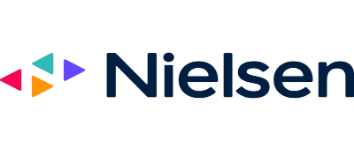Table of Contents
HypGames uses hundreds of thousands of time-series metrics to identify where they can optimize their games and improve revenue
Challenges
- Find a monitoring platform that enables using time-series metrics in a creative way.
- Scale time-series metrics at low cost.
- Find a monitoring tool that can ingest Java DropWizard metrics.
- Build a dashboard that integrates with every data source.
- Monitor in a way that is always compatible with other tools being used on the team.
- Enable granular monitoring of revenue to identify where revenue is coming from.
Solutions
- By implementing MetricFire, HypGames was able to scale their metrics at a low cost. This enabled them to monitor and visualize every process in the game, creating the opportunity to optimize for revenue.
- By implementing MetricFire, HypGames’s monitoring system became broadly compatible with their partners. This saves HypGames time because they don’t have to keep changing tools.
Results
- HypGames saves time by being already compatible with their publishers, and other teams within their project.
- HypGames saves money by using MetricFire, which specializes in scaling time-series metrics, rather than a tool that scales expensively.
Integrations
- Java DropWizard
- Xymon
- Aws
- Logz.io
- Redis
- MySQL
- CircleCI
About
Located in Orlando, FL. HypGames is led by a team of sports gaming veterans who have collaborated for over 25 years on some of the most innovative console, mobile, and fantasy sports games.
The team’s initial company, Hypnotix, created the popular Deer Avenger and Outlaw Sports series before Electronic Arts acquired Hypnotix in 2005.
Over the next 10 years, the team founders worked together on Tiger Woods PGA TOUR and Madden Mobile, before bringing their skills to Zynga and FanDuel to elevate their sports’ gaming offerings. In 2016, the team formed HypGames to focus on the exciting opportunities that lie at the intersection of sports, media, and gaming.
Use Case
HypGames is using MetricFire to monitor three kinds of metrics:
- Application level metrics: Specifically, they’re ingesting Java DropWizard metrics. They look at application metrics such as connection times and query speeds to monitor player experience and system error rates. If there are any rises in error rates, it becomes visible on the dashboard, and then they can react and fix the issue.
- AWS metrics and server monitoring: HypGames is visualizing metrics published by AWS directly in MetricFire’s dashboards. This helps keep control of the infrastructure resources.
- Business monitoring: HypGames is monitoring the revenue being collected by the app on a per hour, per feature, and per channel granularity.
Tracking revenue metrics in a very granular way is the unique challenge that was solved by MetricFire
The one unique challenge that MetricFire solves is collecting and visualizing the data that identifies how HypGames is generating revenue, and how the revenue can be modified. HypGames previously had dashboards for tracking revenue, but they needed a dashboard for tracking revenue from midnight of one day to midnight of the next day. This metric starts at zero everyday, accumulates throughout the day, and produces a daily total at the end of the day. This kind of tracking would allow HypGames to do daily tracking of revenue rather than just seeing the total revenue.
To solve this issue, HypGames turned to MetricFire’s support team.
MetricFire engineers worked with HypGames to set up custom metrics that track specific data points related to their revenue, then display those data points in correlation to other metrics or events. This allows HypGames to see the exact day and time revenue is being received, enabling them to correlate changes in revenue with deployments or errors. MetricFire can also empower users to see from which channel people are spending money, such as facebook users or app store users.
Now HypGames can see clearly which events and changes affect their revenue, enabling them to optimize their game and work processes.
We started using MetricFire a small amount to begin with, and then really ramped up usage as we became more familiar with the platform and saw the value it presented
- Naga Kodali, DevOps and Cloud Engineer at HypGames
Now HypGames can scale, and they can monitor in a way that is compatible with their team
The lifecycle of game development at HypGames creates a unique monitoring environment. For months, a game will be in the development phase, and minimal monitoring will be required. After launch, the number of metrics being monitored will scale alongside the increase in traffic - often increasing 1000x. This creates a situation where monitoring is variable, and it can scale rapidly. HypGames needs a tool that can scale predictably and within budget.
Also, at the launch of a game, HypGames will need to make their monitoring compatible with their publisher. This requires being able to send metrics and dashboards between teams, where both teams have their own data sources. Because MetricFire is built on open source, we are able to integrate with a broad range of tools and utilities. This allows HypGames to flexibly work with their publisher on producing games.
MetricFire is the key tool that allows HypGames to optimize on revenue
Ultimately this empowers HypGames to optimize on revenue by improving their app in a data driven way. It also enables them to analyze infrastructure costs to reduce their own costs. DevOps engineers at HypGames are able to identify where their resources are not being used, so they can cut costs and make sure their app is resourced effectively.
In the beginning, we looked at different options such as New Relic, or SumoLogic. But after looking at their price and what they had to offer, we came back to MetricFire because they had the best value.
- Naga Kodali, DevOps and Cloud Engineer at HypGames













